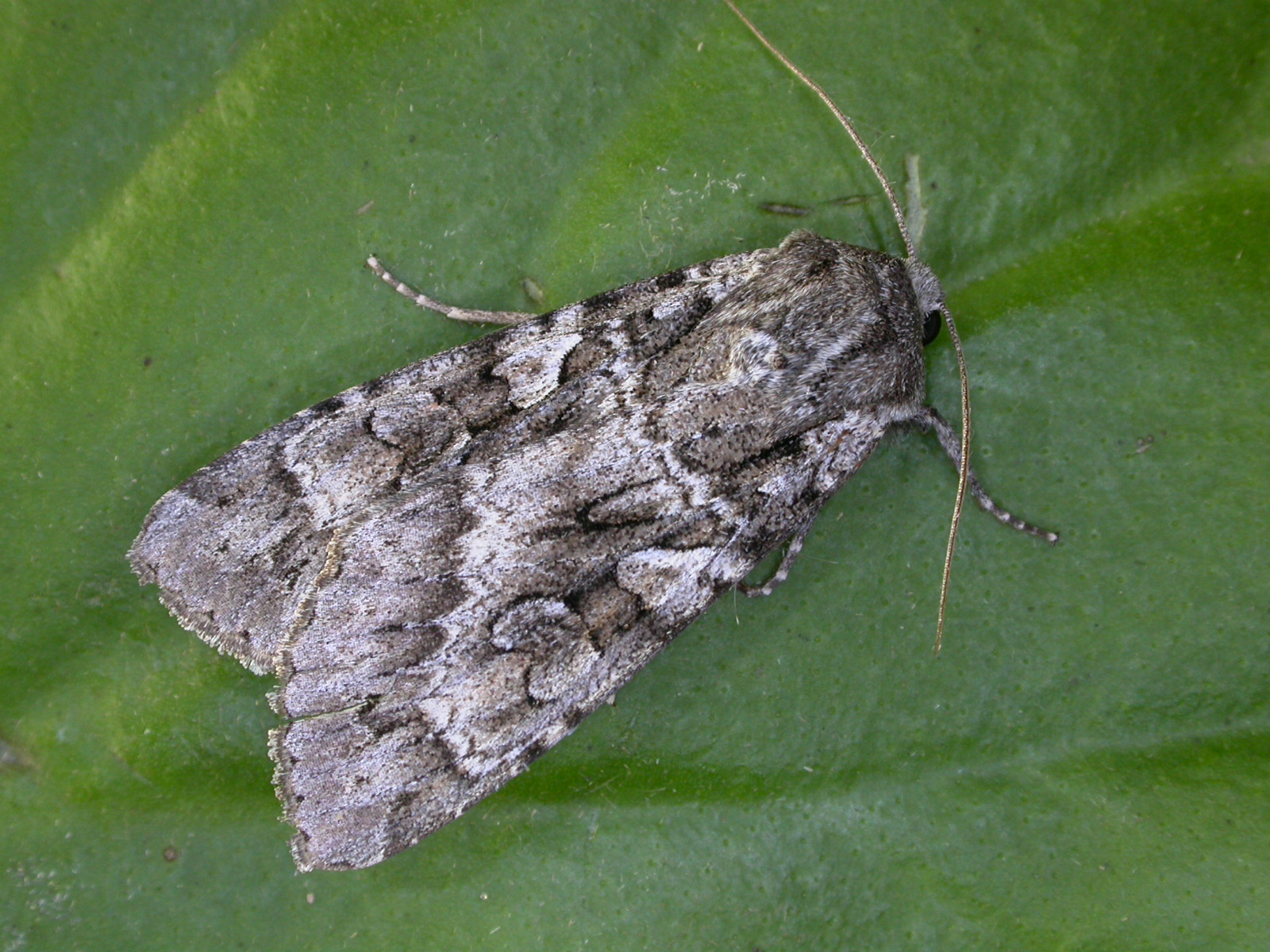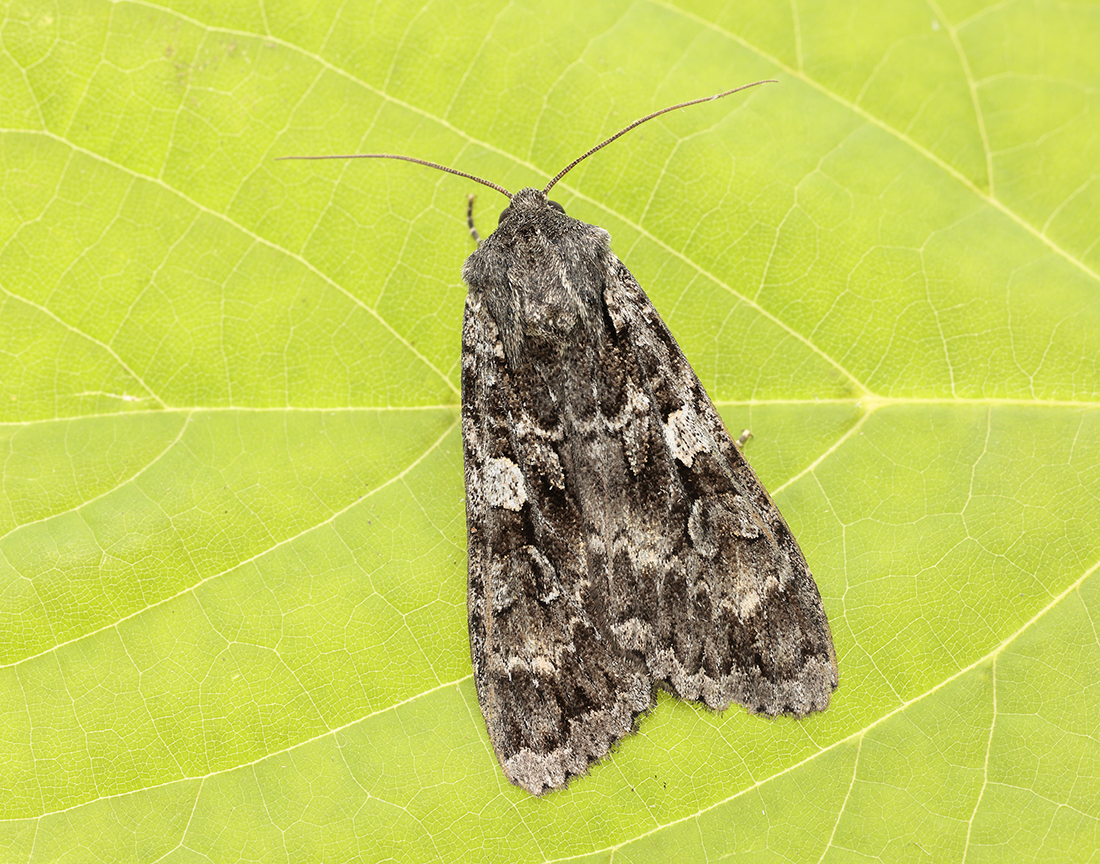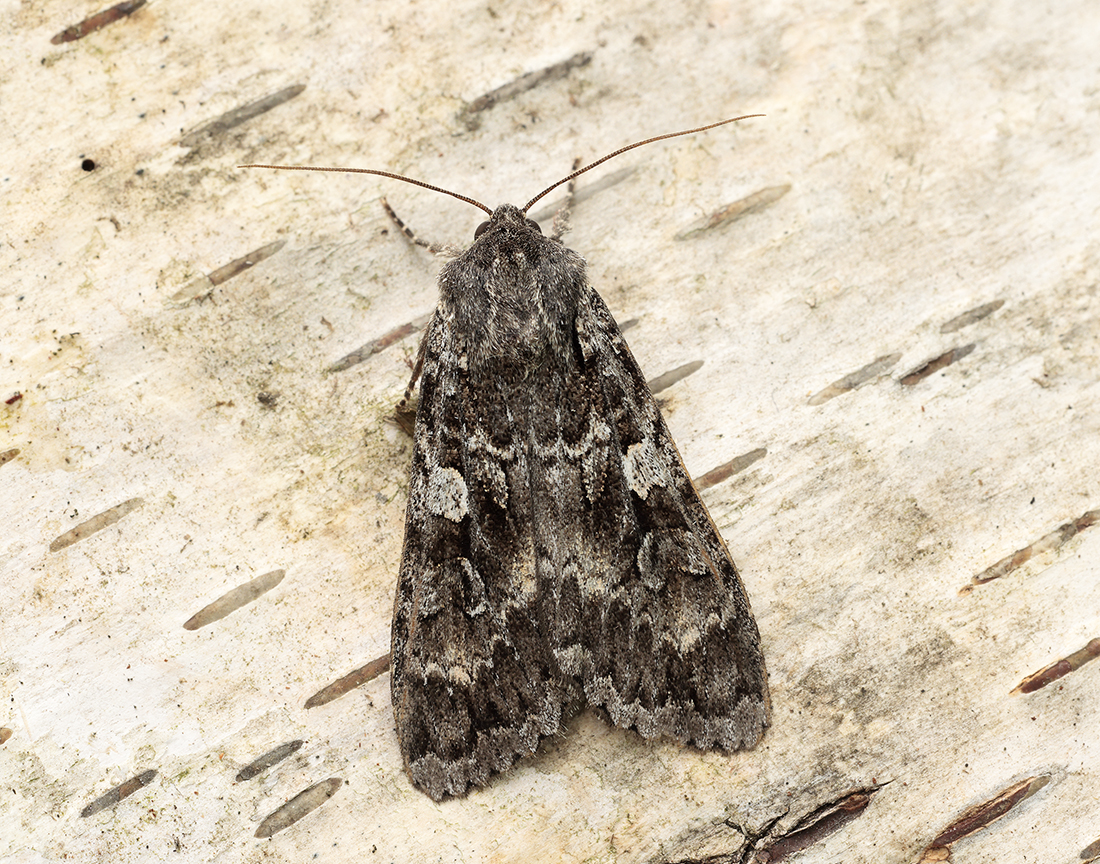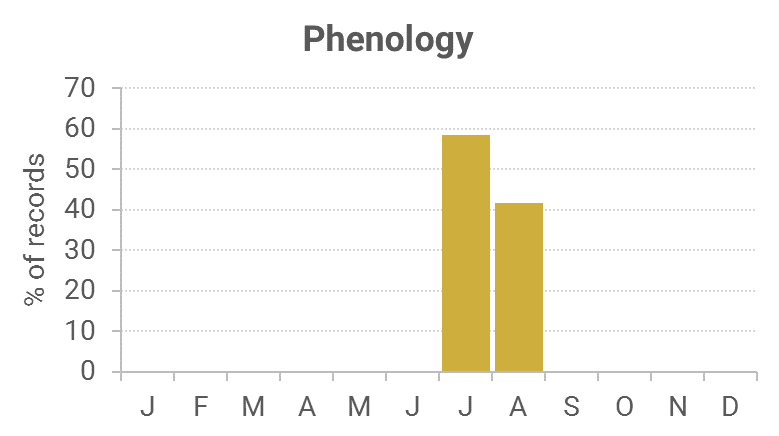Identification
Forewing rather pointed, quite broad, usually with a black basal streak. Two long dart marks extend inwards from the outer cross-band in the leading half. Resident populations are quite dark, almost blackish whereas migrants from European populations are paler and grey.
Recording Method.
Attracted to light, also comes to sugar.
Life cycle
One generation with flight season July-early August. Migrants often arrive later, in August and September. Overwinters as a larva, during September to June. Pupation takes place under moss or plant debris without a cocoon.
Larval foodplants
Mainly Bog-myrtle, but also other herbaceous plants.
Habitat
Boggy areas in scrubby moorland, broadleaved woodland and pine forests.
History
Gordon (1913) had found it to be rare, although he had taken it at sugar in a wood at Corsemalzie on 14th August 1897. W. S. Brocklehurst informed Gordon that he had taken two at sugar at Park Place, Glenluce (VC74) on 12th August 1910. Sir Arthur Duncan (1909-84) during his lifetime had found it at Tynron (VC72). Archibald Russell (1944) listed it as occurring near Gatehouse of Fleet (VC73) during the years 1942-43.
During 1976-77 there were four Rothamsted records: singularly at Gatehouse of Fleet and Waterside Mains, with two records from the Bridge of Dee station. Then, during 1981-83 a handful were trapped on the Hensol Estate (VC73).
The next came twelve years later in 1995 and was trapped at Kirkton. From 1996 to 2010 it was trapped at Drumlanrig, Knowtop Lochs, Cally Woods, Auchencairn, Bennan in Glentrool, Carsfad, near Dalry, Bennan Hill near Mossdale, Mersehead RSPB and Low Cordorcan. There are no Wigtownshire records since 1910.
Ratcliffe (2007) p. 279, says: ‘Has been found around New Galloway and the Mearns’ regard it as a resident breeder, rather than an immigrant.’









